How a Designer Makes $2,000,000 a Year Without Employees and Marketing Expenses
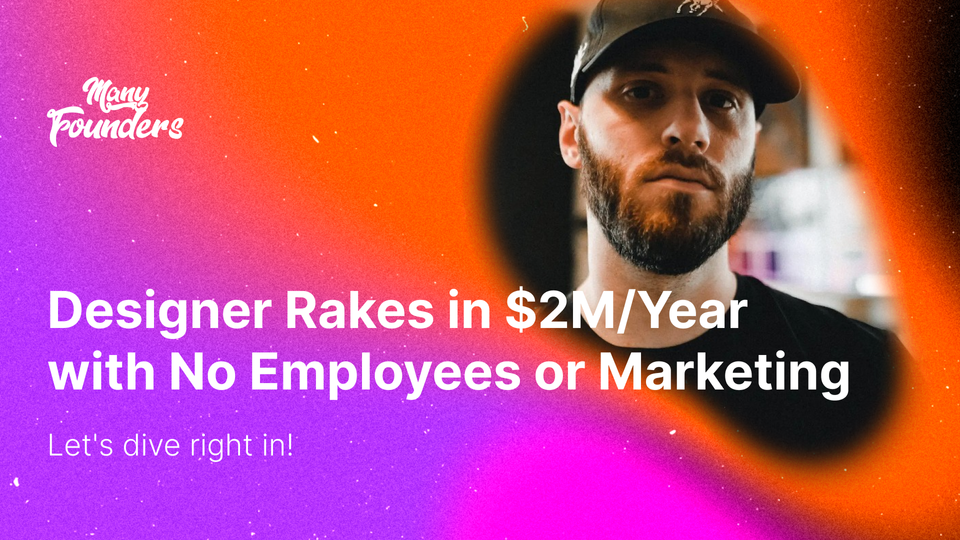
Hi, this is Paul from Many Founders. Here, I share interesting stories of entrepreneurs, analyze their businesses, and focus on how exactly founders attract clients.
Today, I will tell the story of Brett Williams, the founder of DesignJoy - a productized service that provides subscription-based design starting at $5,000 per month. Brett started working on it in 2017, and in 2023, he earned over $2,000,000. Without employees and without marketing expenses. And now, I will explain how exactly he did it.
Here's what you'll learn if you read to the end:
- How Brett gained experience in design by creating 60,000 quote images for Tumblr
- What productized services are and why DesignJoy has no client calls or design briefs
- Who pays $5,000 for a design subscription and why
- How DesignJoy attracts clients without investing in marketing and how to get 100+ clients on a waiting list using Twitter without even having an account there
- Why Brett launched an online course and how he earned over $850,000 from it in a year
Intrigued? Then let's go!
The Story of DesignJoy's Creation
Back in 2011, Brett became interested in design, spending hours in Photoshop creating hundreds of quote images and posters daily for Tumblr and Pinterest. In total, he created over 60,000 such images, many of which became popular on the platforms.
His interest grew into a skill, and Brett got a job as a designer. He changed several companies, and in 2015, he found a suitable place where he rose to the position of creative director. Looking ahead, I'll say that Brett quit this job only when DesignJoy brought in $80,000 a month, which at that time was more than Brett's annual salary. All the previous time, DesignJoy was developed as a side hustle. Yes, this guy doesn't like to take risks ;)
If you ever feel insecure as an entrepreneur, remember I didn't quit my full-time job until I was making $80,000 a month from Designjoy.
— Brett @ Designjoy (@BrettFromDJ) January 4, 2024
The idea of DesignJoy (at that time - Hue) was born in the summer of 2017. Brett was inspired to create a productized service, not just another design agency, by the existing product DesignPickl, which provided subscription-based design.
It's time to find out what productized services are and how they work.
As Brett himself says, he wanted to make design as accessible and easy to buy as t-shirts in an online store. Without long calls, boring sales and meetings, annoying briefs, and all that stuff.
An undeniable plus of this product approach is 30-40% of time freed up from communication, which can be spent on the main thing - design.
"It takes me 15 seconds to onboard the client."
Sounds like a fairy tale, right? DesignJoy uses only asynchronous communication through Trello. The only option available to the client is a 15-minute call at the start. After that, Brett sends an onboarding email with instructions and invites the client to a Kanban board in Trello with one click.
And you know what? Clients are completely satisfied with this format! Here's what it looks like:

Another surprise: there are no briefs in DesignJoy either. The client simply sets tasks in Trello in a convenient and free form and receives the result within 48 hours, which is guaranteed by the offer.
Speed is one of the main components of DesignJoy's success, but we'll talk about that in more detail later. Brett himself says that his skills and experience help him accurately meet the client's expectations in 90% of cases and deliver exactly what fully satisfies the customer, even without a detailed brief. He calls it assumption-based design.
An important rule of the DesignJoy subscription is to make one active request at a time. Which is quite logical; otherwise, Brett would simply be overwhelmed with tasks.
DesignJoy has an average of 20-25 clients at a time, although at its peak, there were 35. About half of them are in the process of reviewing and approving an already completed project.
Brett does not set any time limits on the review process. A good move, isn't it? The subscription is for a month, not for a project. A few clients simply remain silent, usually having one active request per month, which fully satisfies them. And only the remaining portion has one active task, which Brett works on.
Brett breaks down large projects, like multi-page websites, into chunks and delivers each chunk within 48 hours. He honestly admits that some clients underutilize the subscription's capabilities.
So what kind of companies pay $5,000 a month?
Mostly, they are technology-driven B2B SaaS companies or startups that have received funding. And this is a very important piece of the puzzle. It is the focus on solvent, funded technology platforms that largely predetermined DesignJoy's success. The right product is in the right market.
For example, the most basic subscription package to DesignPickle, one of DesignJoy's competitors, costs only $649 instead of the $5,000 that Brett charges. But DesignPickle has no specialization; they take on any projects and do low-tier design (illustrations, banners, and the like). That's why their subscription costs much less. But this does not mean that they do less work and deliver less design for that money.
However, if you calculate everything, $5,000 a month looks like a more than fair price. A senior designer, which is what Brett considers himself to be, costs about $120,000 a year.
And that's without the costs of hiring, benefits, firing, and so on. That is, at least twice as expensive as a DesignJoy subscription, which, moreover, can be canceled at any time or put on pause if there are no tasks. Sounds like a great offer!
I could charge more but I'm comfortable where I'm at.
Here's what Brett himself thinks about the $5,000 subscription price. He started at $450 when he launched in 2017 and increased the price as demand grew. A brilliant approach! After all, if you're selling your time and don't intend to hire anyone, then raising the price again and again as demand increases is a very logical move. Bravo, Brett!
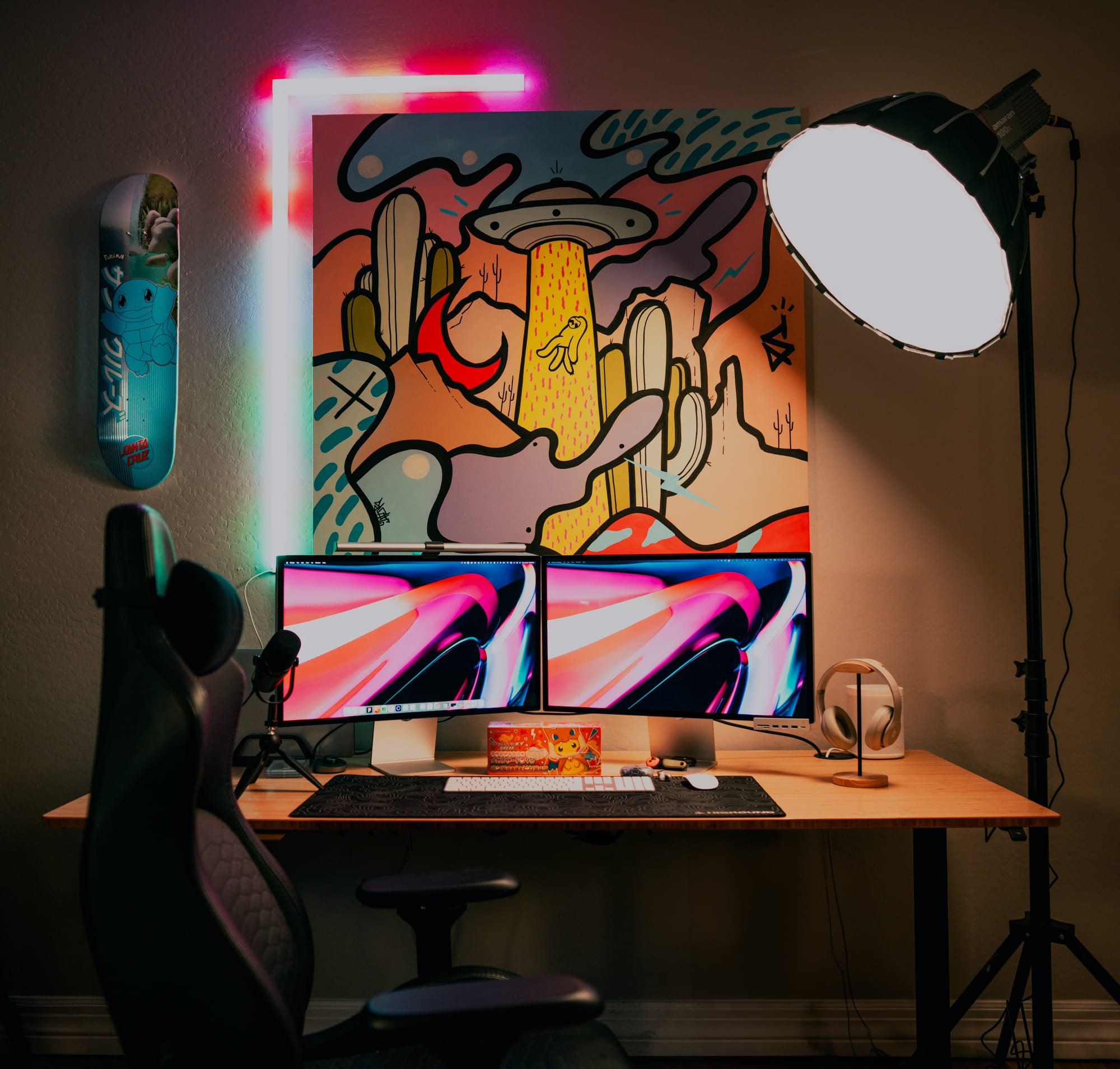
1 - How exactly does DesignJoy attract clients?
This is my favorite part. Let's break down all the tactics that brought DesignJoy results in the form of traffic, clients, and brand recognition.
1.Launch on Product Hunt
As soon as the first DesignJoy landing page was designed, Brett launched it on Product Hunt. He didn't prepare for the launch in any special way and didn't have a single follower on that platform. Nevertheless, the launch brought DesignJoy its first clients and 40,000 visitors to the site on the day of the launch.
And here's the secret:
- 00:01 is the exact time when Brett published the project. This allowed him to have a full 24 hours to collect upvotes and feedback.
- Brett wrote to a friend who had about 1,000 followers on Product Hunt, asked him to hunt the product, and he agreed. This significantly increased the launch's reach. Simple and highly effective!
- It was crucial to mention that DesignJoy was the first productized service providing design by subscription that was launched on Product Hunt. This largely determined the audience's interest in the launch. Later, some competitors tried to repeat the DesignJoy launch experience, but none of them had such success.
I'll note separately the following. There is another important detail in Brett's PH launch — hitting the right audience. DesignJoy was noticed by many startup founders from the valley, particularly from the Y Combinator accelerator. When they received funding, they became DesignJoy clients.
And, even more importantly, those who were already working with DesignJoy were happy to recommend the service to their friends, also founders of SaaS companies. So already at the very beginning of the journey, DesignJoy had recognition and a good reputation among founders of technology companies — the main target audience. Bullseye!
2 - Building in Public
In 2020, Brett began sharing his journey and the development of DesignJoy on Indie Hackers — a community of online company founders and solopreneurs. And this community became a huge growth driver for DesignJoy.
Brett approached his Indie Hackers blog with intelligence. He used diverse content and a very open format in his posts. Brett alternated stories about how his project works from the inside, what the workflow looks like, and shared milestones and numbers. All this endeared him to the community.
Brett answered questions, held design giveaways, asked for advice, and shared tools that helped him grow. This was generously rewarded by the community: DesignJoy gained recognition, publications in various newsletters and blogs. Brett was invited to podcasts and, of course, DesignJoy got many new clients thanks to the Indie Hackers blog.
3 - Viral Projects
Here, it's worth noting one of the most successful projects - scribbbles.design. This is a set of templates that have been downloaded more than 25,000 times during their existence and have been used in designs for major brands, such as JP Morgan Chase bank. Additionally, Brett added all such projects and template sets to website design inspiration galleries, from which he received good traffic. I will talk about this in more detail in the next point.
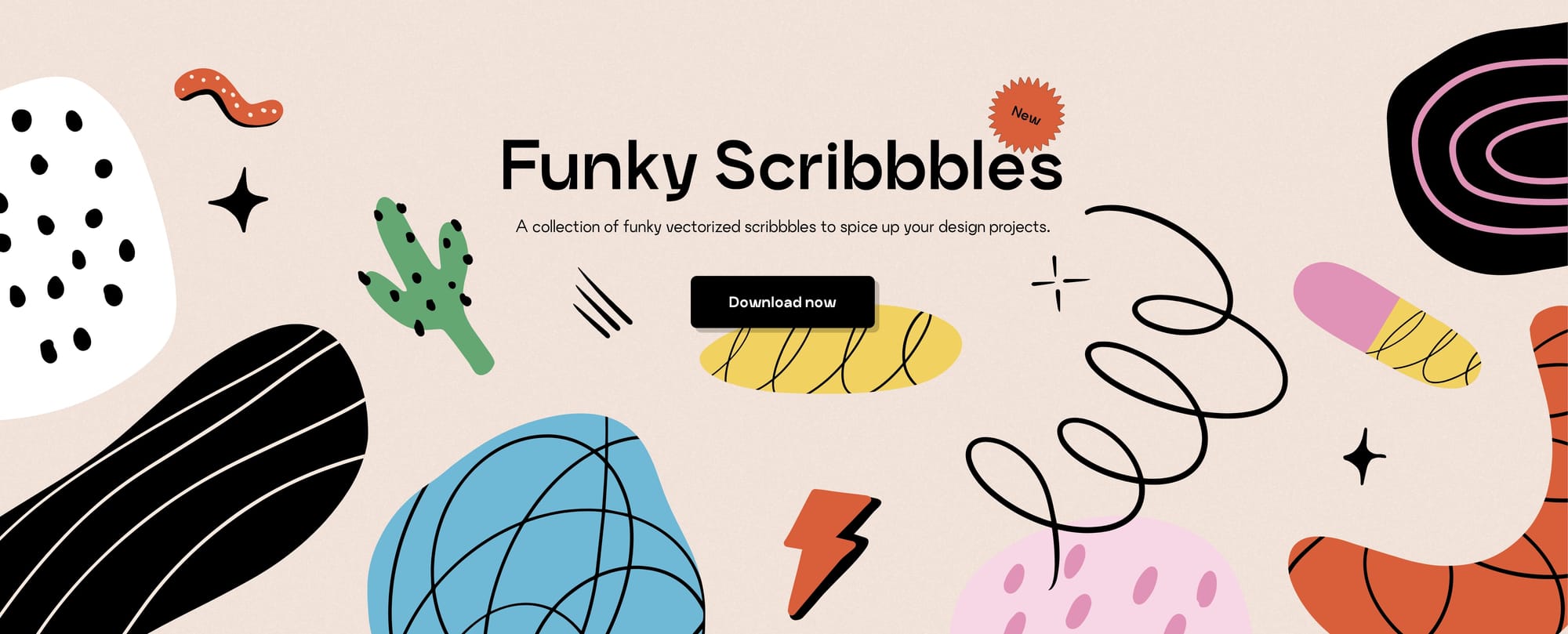
4 - Website design inspiration galleries
These are something like Dribbble or Behance, but with a specialization in landing page design. And Brett had his own thoughtful approach to this traffic source. Every time he updated the design of DesignJoy.co or one of his side projects, he resubmitted the updated version to all possible inspiration galleries, and each time this gave a new boost on the platforms.
According to Brett, the best responses came from lapa.ninja, landingfolio.com, niceverynice.com, and especially land-book.com. There, DesignJoy made it to the top, and this site brought conversions for years.
5 - Cold Emails
This practice was only tested by Brett, but although it brought clients, it did not become regular. Brett manually selected SaaS companies that fit the profile of the ideal client and found the necessary emails using hunter.io.
He did the mailing through Hubspot CRM, which made it convenient to monitor the results. Another working channel for attracting clients without costs. Brilliant!
6 - Referral Program
Brett launched the DesignJoy referral program on the same Indie Hackers, simply saying that he would share profits from referred clients for the entire period of cooperation.
Since the price was not small, and the payments were monthly, this turned out to be a profitable offer for many community members. For many years, the DesignJoy referral program remained an excellent channel for attracting clients. And again: zero investment in marketing.
7 - Twitter (Х)
Brett appeared on Twitter not so long ago, in 2022, when Dan Rowden made a post about DesignJoy. By the way, Dan learned about DesignJoy on IndieHackers, which once again confirms the power of the built-in-public approach.
DesignJoy is at $90k MRR (!).
— Dan Rowden (@dr) February 5, 2022
A one-man design team, working with clients on $2.5k/m and $3k/m subscriptions.
Only needs ~30 customers for $1m ARR. Already past it.
A really ballsy business (unlimited designs and revisions, forever!) that's paid off big time. pic.twitter.com/Ke7meR3yZw
Then Brett received a flood of applications. In the month after that post, DesignJoy's MRR grew from $80,000 to $160,000. Over the next three weeks, more than 100 clients ended up on the waiting list! At those times, Brett worked 12 hours a day and caught his first burnout in life. After that, he doubled the price and removed calls from the offer conditions.
Every time I raise my prices, my reason for doing so is always to manage growth. Ironically though, I only end up making more money and working with better clients.
Brett now regularly maintains Twitter, and more than 57k people are subscribed to him. No rocket science; he makes tweets that don't require effort or time a few times a week, writes about DesignJoy's achievements, and promotes his course, which I will talk about at the end.
8 - Buying a group/page
And here's a small but very interesting cherry on top. These were the only investments in DesignJoy marketing that paid off instantly. Here's how it went.
Brett monitored Instagram profiles about design and manually sent them purchase offers. So, within just one day, he sent about 30 messages, and one of them responded.
After a short negotiation about the price, Brett bought an Instagram account about design with 58,000 followers for $1,400 and already from the first post in it with a simple story about himself and his product, he got a client, thereby instantly recouping the costs and earning on top of that on the first day. Simple? Yes! Effective? Obviously!
Course - Productized Yourself
We're approaching the end of the story, and I promised to talk about the course. With the growing popularity, the release of articles, interviews, and podcasts about DesignJoy, Brett began to receive more and more questions, requests for consulting, and pleas for help. After several such calls, he realized that most of the questions were repetitive and decided to create a course on how to make money with productized services.
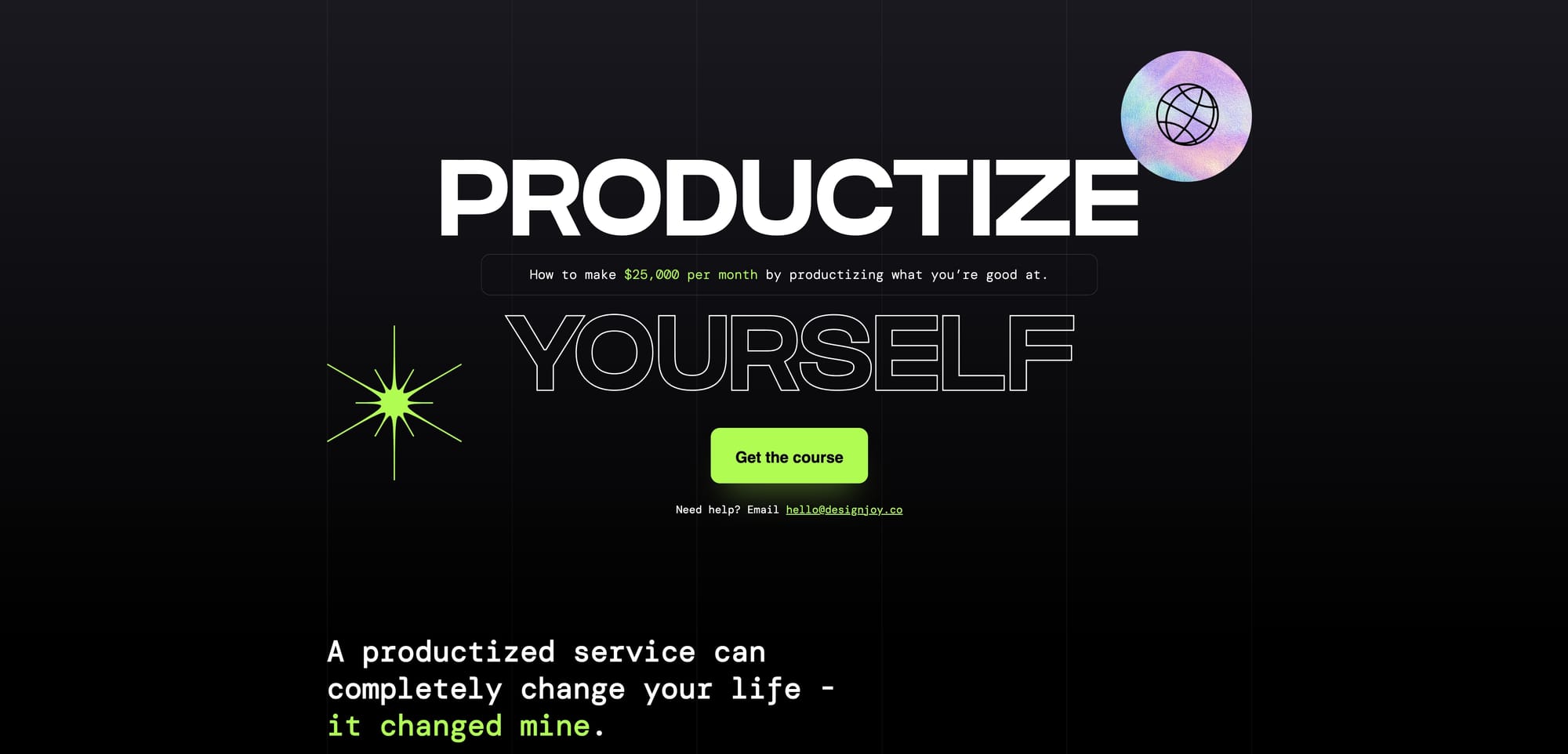
The course consists of 25 short audios of 3-5 minutes each and 9 small screencast videos recorded in Loom. However, in the first month alone, more than 1,600 people bought the course, and in total for 2023, Productized Yourself brought Brett $852,000.
Conclusions
My story is proof that, with an insane amount of hustle and ambition, you can do the impossible.
Not every designer could repeat Brett's story. As Brett himself says, he knows how to work fast while delivering quality designs that solve clients' problems and fully satisfy their requests.
Here, in my opinion, are the key success factors of DesignJoy:
1 - Brett's own skills, his skills combined with the speed of work
2 - Targeting a specific solvent segment of clients - SaaS companies
3 - Innovative approach - productized service that generates interest and spreads well virally.
4 - Demand-based pricing strategy that helped raise prices from $450 to $5,000.
5 - A thoughtful and diverse approach to attracting clients.
And I want to end with a phrase that Brett once wrote in his blog on IH — It's glorified freelancing, but I've productized it. I worked smarter, not harder.
It’s glorified freelancing, but I’ve productized it. I worked smarter, and not harder.
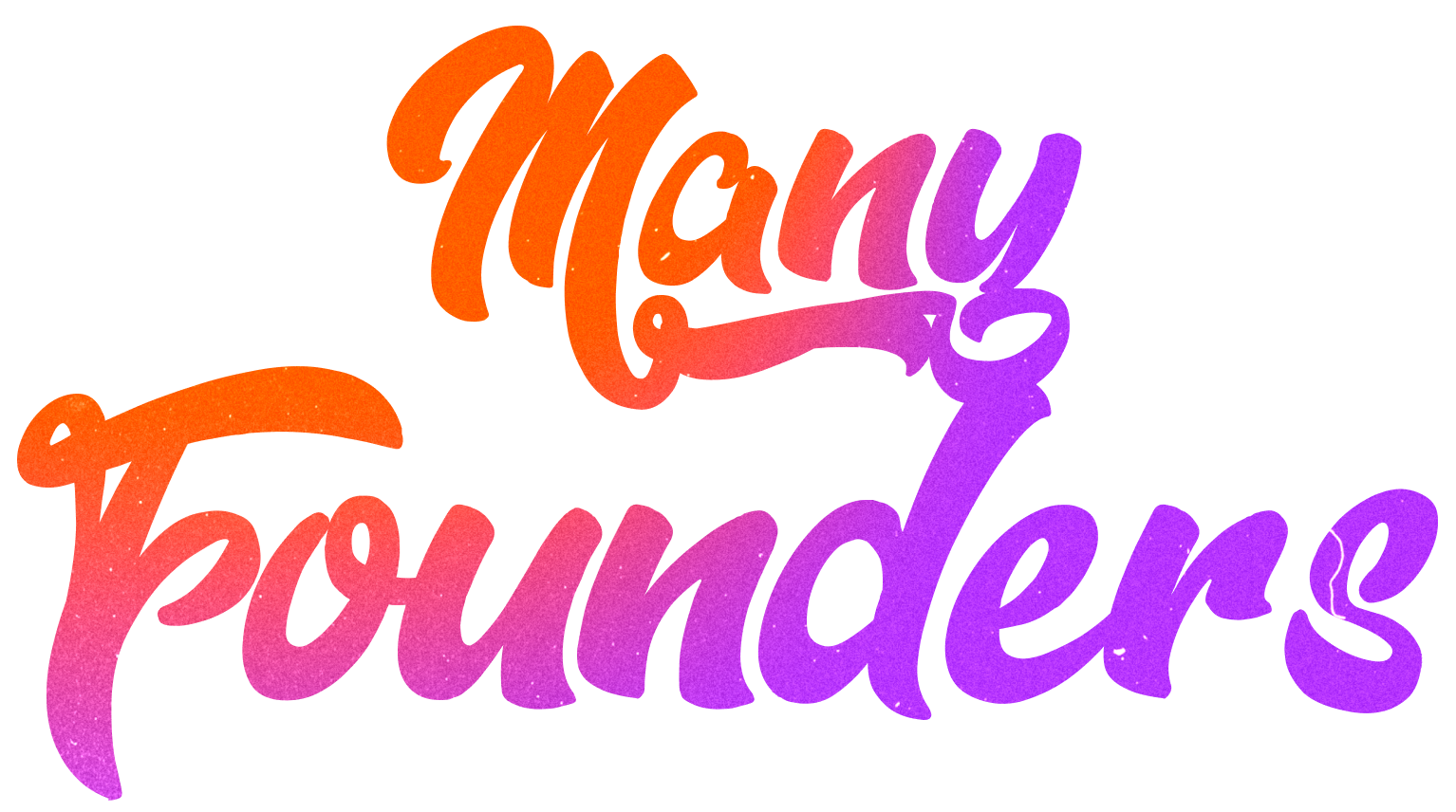
Member discussion